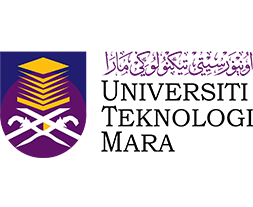














Information Systems (IS) involve the integration of people, procedures, data, and technology to facilitate the collection, retention, analysis, and dissemination of information within an organization.
The Internet of Things (IoT) refers to a network of physical devices, sensors, and software that are interconnected and share data through the internet. In the foundational research area known as IS IoT, the goal is to explore key aspects that highlight how the ISIoT domain contributes to knowledge and fosters meaningful transformation and impact.
The IS IoT Lab provides research, innovation, consulting, and other services, including but not limited to:
The AR-HCI Lab consists of an extended reality and HCI (Human-Computer Interaction) lab that promotes applied research in augmented reality and virtual reality, focusing on understanding people and their interactions, and translating this understanding into the design and evaluation of innovative applications, games, and systems. Extended reality is merging the real and virtual worlds to create new environments and visualizations where physical and digital objects coexist and interact in real-time. HCI is a discipline that involves researching, designing, building, and implementing human-centered interactive computer systems. Improvements in HCI technologies can enhance virtual reality (VR) and augmented reality (AR) experiences by providing users with more natural and efficient ways to interact with real or virtual environments.
The facilities include an SMI RED eye-tracker, Neuro Harmony, brain-computer interface scanning, Signer’s LifeLog camera, RealWear smart glasses, Hololens, and OBSERVER® XT. The Extended Reality and HCI Lab offers:
The Intelligent Data Analytics (IDA) Lab promotes both fundamental and applied research in data science, data analytics, machine learning, and data visualization. Data analytics is the foundation for data-intensive research aimed at addressing the challenges faced by industries in the era of big data. In recent years, artificial intelligence (AI) has become so prominent that it has made remarkable progress across a wide range of industries, including agriculture, healthcare, manufacturing, and finance.
The IDA Lab leverages AI and big data technologies, utilizing data from industry, government, and academia to provide optimal data analytics solutions. The main research capabilities of the IDA Lab include:
Stimulation & Computer Vision is a field of Artificial Intelligence (AI) that enables computers and systems to derive meaningful information from digital images, videos, and other visual inputs, and take action or make recommendations based on that information. If AI enables computers to think, then computer vision allows them to see, observe, and understand.
The way computer vision works is roughly similar to human vision, only humans have the advantage of context over their lifetime to learn how to distinguish objects, determine their distance, detect motion, and identify problems within images.
Stimulation & Computer vision trains machines to perform these functions, but it must do so using cameras, data, and algorithms within a much shorter time frame, unlike the retina, optic nerve, and visual cortex in humans. Since trained systems can analyze thousands of products or processes per minute when inspecting products or monitoring production assets, they can detect defects or issues that may be nearly imperceptible to the human eye, quickly surpassing human capabilities.
Stimulation & Computer vision is used across various industries, from energy and utilities to manufacturing and automotive, and the market for it continues to grow.